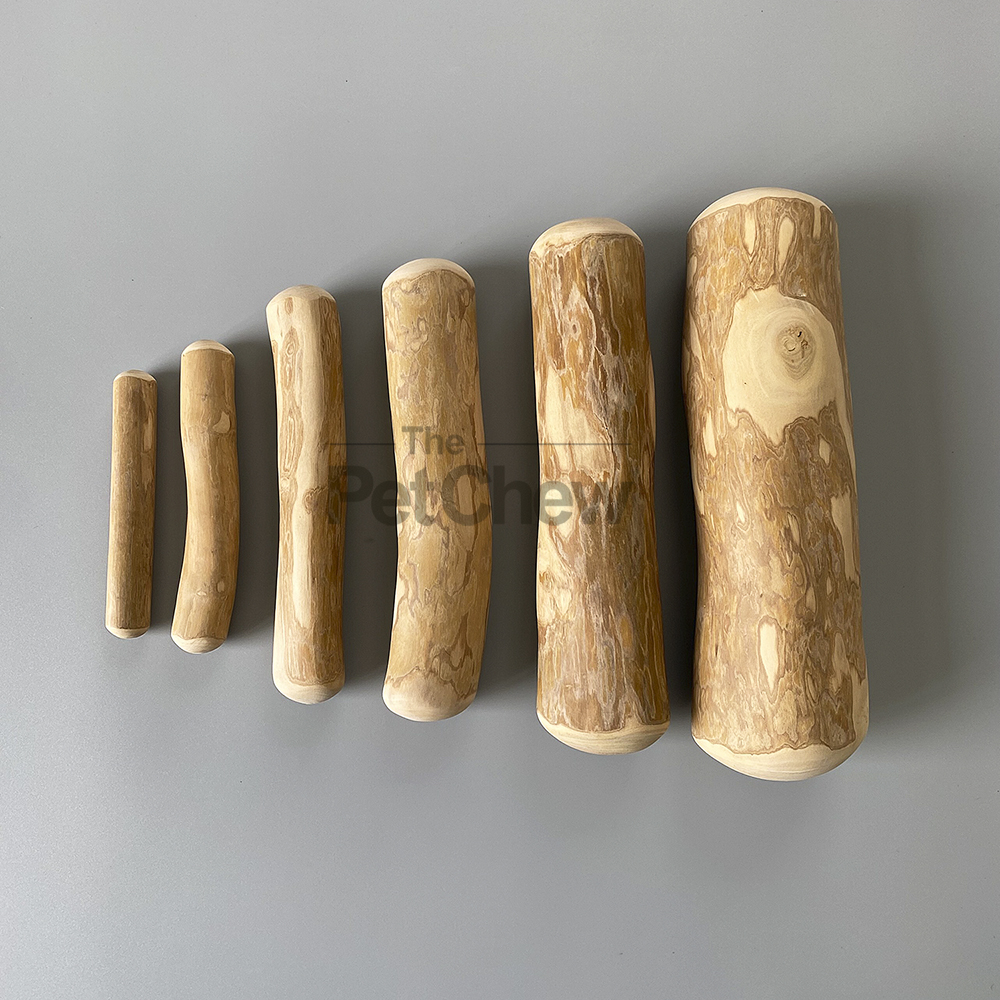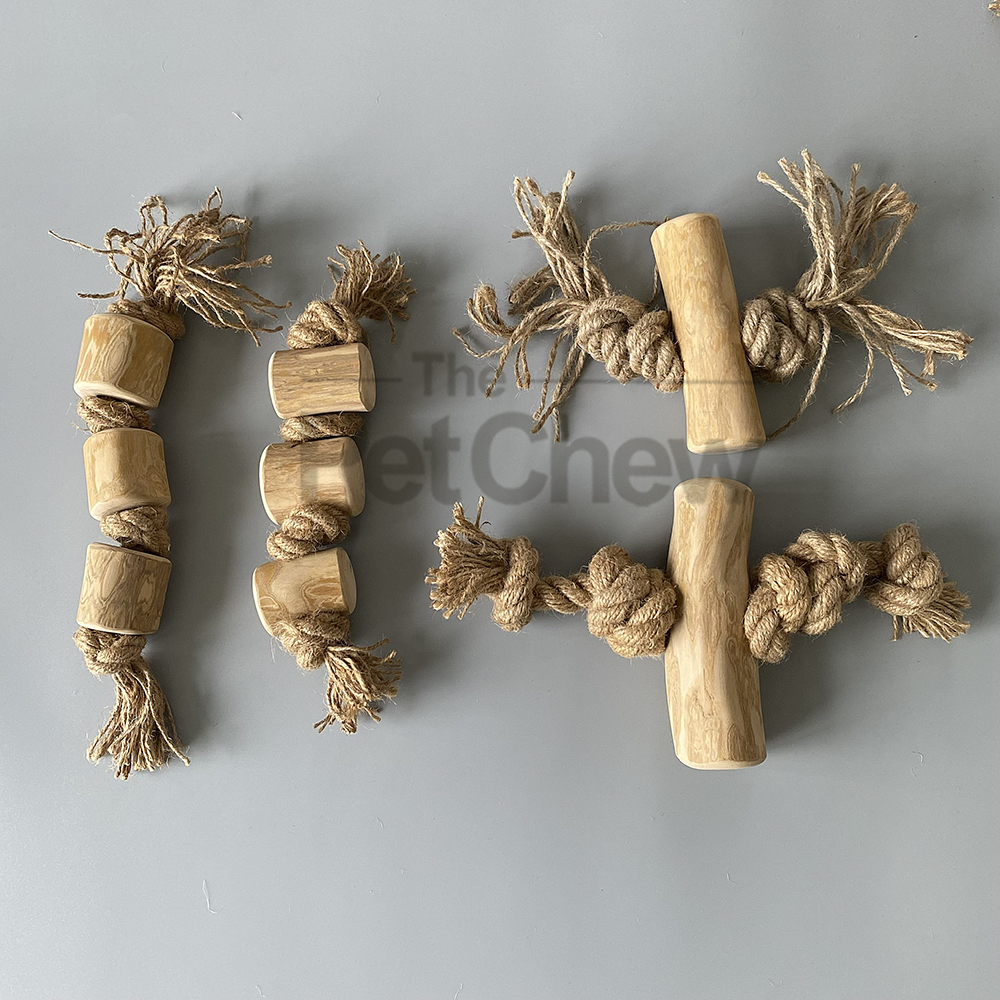Blogs
Coffee Wood vs. Traditional Chew Toys: Which is Better for Your Dog?
When it comes to choosing the right chew toy for your dog, the options can be overwhelming. From rubber bones to rawhide chews, and now the increasingly popular coffee wood chews, it can be challenging to determine which is the best fit for your furry friend. Each type of chew toy has its own set of benefits and potential drawbacks, so let’s compare coffee wood chews with traditional chew toys to help you make an informed decision.
Coffee Wood Chews: A Natural Choice
What Are Coffee Wood Chews?
Coffee wood chews are made from the branches of coffee plants, specifically from Coffea Arabica. These branches are harvested sustainably, shaped into chewable sticks, and left untreated, making them a 100% natural product.
Pros:
- Natural and Chemical-Free: Coffee wood chews are free from chemicals, preservatives, and artificial flavors, making them a safe choice for dogs, especially those with allergies or sensitivities.
- Durability: Coffee wood is dense and tough, providing a long-lasting chew experience that can satisfy even aggressive chewers.
- Dental Benefits: The natural texture of coffee wood helps to scrape away plaque and tartar from a dog’s teeth, promoting better dental health.
- Eco-Friendly: These chews are made from a renewable resource and are biodegradable, making them an environmentally friendly option.
- Low-Calorie: Unlike edible chews, coffee wood does not add calories to your dog’s diet, making it a good option for dogs that need to watch their weight.
Cons:
- Not Edible: While safe to chew, coffee wood is not meant to be ingested. Pet owners need to monitor their dogs to ensure they do not swallow large pieces.
- Less Flavorful: Coffee wood chews do not have the enticing flavors that some traditional chews offer, which might make them less appealing to picky dogs.

Traditional Chew Toys: The Classic Options
What Are Traditional Chew Toys?
Traditional chew toys come in various forms, including rubber toys, nylon bones, rawhide chews, and flavored edible chews. These are typically made from synthetic materials or animal by-products.
Pros:
- Variety of Options: Traditional chew toys come in a wide range of shapes, sizes, textures, and flavors, catering to different chewing preferences and needs.
- Interactive and Engaging: Many traditional chew toys are designed to be interactive, such as those that dispense treats or squeak, providing additional mental stimulation.
- Flavor Appeal: Flavored chews, such as those made from rawhide or infused with beef or chicken flavor, can be highly appealing to dogs, encouraging them to chew more.
Cons:
- Potential Health Risks: Some traditional chew toys, particularly those made from rawhide, can pose choking hazards or cause digestive blockages if ingested. Additionally, synthetic chews may contain chemicals that could be harmful over time.
- Environmental Impact: Many traditional chew toys are made from plastics or other non-biodegradable materials, contributing to environmental waste.
- Shorter Lifespan: Depending on the material and the dog’s chewing habits, traditional chew toys may wear out more quickly and need to be replaced more frequently.
Comparing the Two: Which is Better?
The choice between coffee wood chews and traditional chew toys ultimately depends on your dog’s needs, preferences, and your values as a pet owner.
- For Natural and Eco-Conscious Choices: If you prioritize natural products and environmental sustainability, coffee wood chews are a strong contender. They offer a safe, long-lasting, and eco-friendly alternative to synthetic chews.
- For Picky or Flavor-Oriented Dogs: Traditional chew toys with added flavors or interactive elements may be more appealing to dogs that are motivated by taste or enjoy more engaging play.
- For Dental Health: Both coffee wood and certain traditional chew toys can provide dental benefits. However, coffee wood’s natural texture may offer a more thorough cleaning for teeth and gums.
- For Aggressive Chewers: Coffee wood chews are highly durable, making them suitable for dogs that are heavy chewers. Some traditional toys, like tough rubber or nylon bones, can also be good options, but they may need to be replaced more often.
Conclusion
Both coffee wood and traditional chew toys have their own unique advantages, and the best choice will depend on your dog’s specific needs and your personal preferences. Coffee wood chews stand out for their natural composition, durability, and eco-friendliness, making them an excellent choice for many pet owners. Traditional chew toys, with their variety of flavors and interactive features, might be more suitable for dogs with specific tastes or those who enjoy a more engaging chewing experience. Whichever option you choose, ensure it’s safe, appropriate for your dog’s size and chewing habits, and provides the mental and physical stimulation they need.


